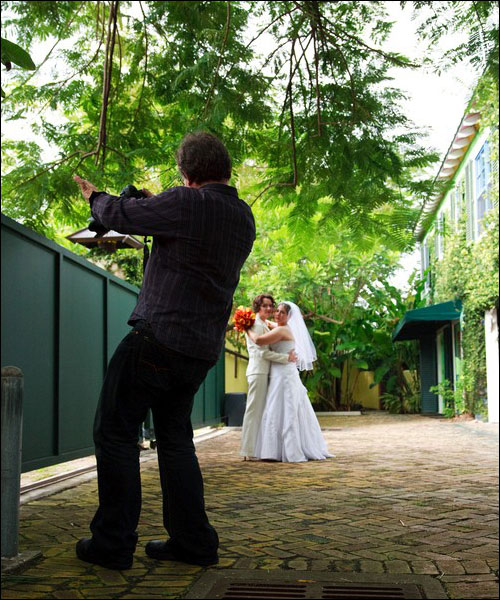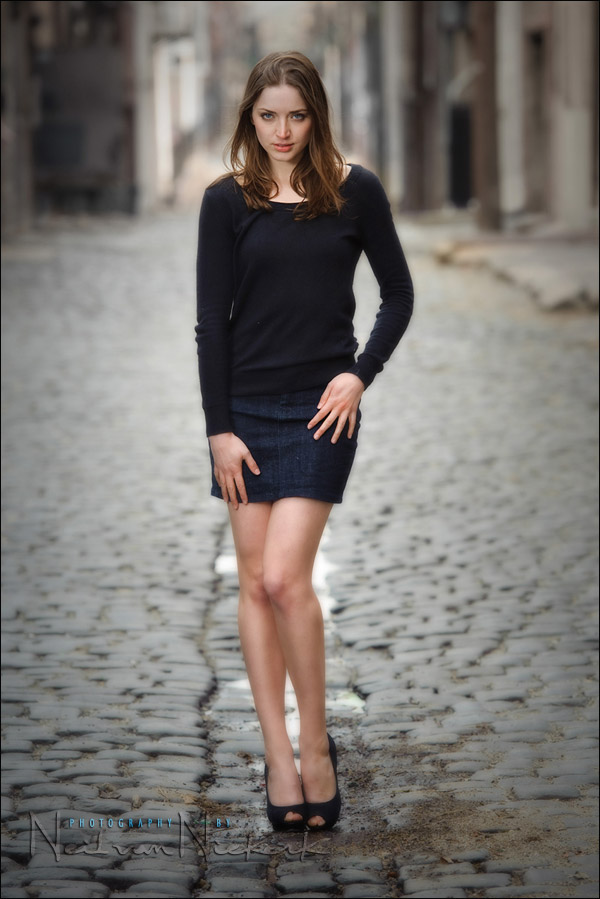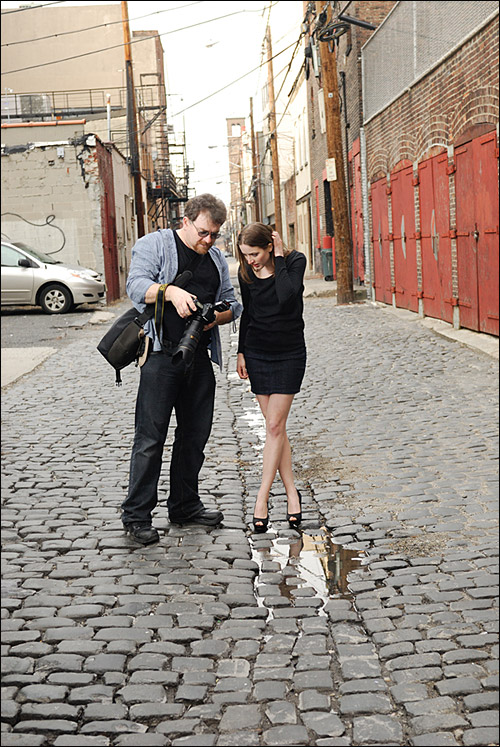
tips for posing people / working with a model
So you have a great camera and lens; and someone who is willing to be photographed and willing to work with you; and you have a great idea for a setting or backdrop … but now what?Quite a few people have asked about advice on posing their subjects in the thread on future topics for the Tangents blog. Posing your subject is something that can be quite intimidating to a newer photographer. The pressure is now on YOU to create magic .. or at least an arresting image. Leaving everything up to the model or your subject to do, or for them to come up with ideas … while you just click the shutter, makes you just an owner of a camera, and not a photographer.
When photographing portraits of people then, at some level you need to be able to pre-visualize what you want. Or, recognize when you actually have something in front of your camera that makes a good subject. The point I’m aiming at here, is that if you want to photograph portraits of people, you can’t be passive. At some level you have to exercise control, whether it is the location or the light, or some element that you add or make a decision about. You have to be active in creating the portrait. And this often means directing your subject or posing them.
In my experience, the best models aren’t necessarily the more beautiful women, but rather those who can project some personality. No shyness. I think the best models are actresses at some level. You really have to act a little .. whether expression or body posture.
The photo above is of my assistant, Jessica. While she isn’t a professional model, and doesn’t have much experience .. she has an attitude that she projects. And it works. She was one of the best models I’ve had. Simply because of her personality.
The best models have great personalities and are quite comfortable in front of the camera. I think it comes down again to them being able to project ‘something’ towards the eventual viewer. It need not be something dramatic … it can be something as cute as a wrinkle of the nose; a half smile; a small gesture.
Okay, so that’s great if you have a model or subject who is somehow a natural at it, and needs little direction. What if you have a subject who has little or no experience?
Well, this is where YOU have to step in as the photographer …
my 3 best tips on posing people:
1. have your subject mirror your pose
When you want your subject to pose in a certain way … get in there and SHOW them by having them mirror your pose. Instead of giving verbal instruction such as, “move your left hand up a bit” – which can be confusing – it is better if YOU mirror her, and move your hand how you want it to. That visual cue is much easier to follow than a verbal instruction.Same thing if you want your model (or subject) to move their shoulder a bit, or position their legs. Just show it and have then copy you, mirror image. It is funny when I do it, since I don’t look as elegant as the model. Or rather, she shouldn’t look as inelegant as I do! Which is part of keeping a photo session light and fun.
But it really does help to get in there and physically show what you had in mind. Verbal instruction can be confusing, especially with left & right and mirror image. So I very often physically demonstrate .. as anyone who has been to one of my workshops already know. ;)
Here is a photo of myself at a destination wedding where I was the photographer, where I am showing the couple what I had in mind … it might look like I am doing Tai Chi here though.

It’s just easier for your subject to follow your cue if they can see what you want.
2. do your homework; internalize a few ideas
The best suggestion I have then for posing someone, is for them to mirror your movement and positioning … which doesn’t work at all if you have no idea where to start.It is good homework then for YOU to practice in front of a mirror. See if a specific pose or idea works.
- What can you change about the position of your hands and feet to improve the pose?
- If you hold your arm in a certain way while looking at it in the mirror, is there a fore-shortening effect?
- What happens if you bend your knee in a certain way?
And so on. Explore. I know it might sound silly, but there is no real way you can pose someone else if YOU have no idea how to do it. Your instruction will be hollow advice to someone who has no idea how to pose themselves. So this comes right back to the initial advice – get in there and be active.
It is also a good idea to look at clothing catalogues as an example. The poses shown in that link are fairly simple – but they work. Internalize a few ideas so that you can use them at a later date. If you have a dozen or so simple poses to use as reference, then you can more easily improvise from there.
3. give your subject feedback and positive instruction
Regular readers will immediately recognize Anelisa, who is my favorite model to work with. She is energetic and has a great personality. She constantly changes her positioning and movement; changing between shutter clicks, making every moment different.
She also comes up with ideas, and this makes her great to collaborate with. This brings up a very important point …
give your subject / model feedback and positive instruction

Your subjects most likely have no idea what you’re seeing through your camera. They have no idea how you are framing them in relation to the background. So quite often it might not make sense to your subject why you chose *this* particular spot for them to stand in.
This is where digital cameras are fantastic – they offer the opportunity for you to show your subject what you’re getting. It is a great boost for their self-confidence, and a great boost in their confidence in you as the photographer. It’s all about the collaboration between photographer and subject. Seeing how they appear in the photograph, is also of immeasurable help to your subject in seeing if they want to change something.
The key is to make your subject comfortable about working with you, and finding the setting for them.
I worked with another photographer some time last year on a shoot. He’d set up a shot .. and then would look at his camera’s preview, and go, “Hmmm, this is not working for me.” .. and then set up something else. I felt it just didn’t help much, since it does nothing to reinforce the model’s confidence. It could even be misconstrued by the model as being critical of her.
Much better to show the model what you got in your camera, and how you want to adjust something in the set up. Or explain how the way YOU set it up, didn’t quite work, and that she is doing great .. but you want to change things up a little bit, or move on to another spot.
That reinforcement and encouragement is subtle, but I feel it helps keep the rhythm of the shoot going.
Finally, a quick note about people skills, although much of it is self-evident advice:
- Keep a professional demeanor, but make it fun. Keep it relaxed.
- Give instruction to your subjects. Help them adjust to what you want.
- Talk to them. Give feedback, and keep it light.
- If you work with a model, pay for lunch or coffee.
- Be enthusiastic.
No comments:
Post a Comment